Introduction
Small-scale farming and local food systems are at the heart of a growing movement that emphasizes community, sustainability, and a return to traditional agricultural practices. Beyond the idyllic images of farmers’ markets and picturesque farms, there’s a complex and compelling economic story that underpins the viability and importance of these systems. In this article, we’ll delve into the economics of small-scale farming and local food systems, exploring the benefits, challenges, and the significant role they play in our global food landscape.
The resurgence of small-scale farming and local food systems is more than just a nostalgic return to simpler times; it represents a multifaceted movement with profound economic implications that extend far beyond the farm gate. It’s a movement built upon the principles of community, sustainability, and the revival of traditional agricultural practices, all of which contribute to a captivating and intricate economic narrative that is shaping the future of food.
Economic Benefits for Local Communities: At the heart of small-scale farming and local food systems lies a commitment to community well-being. By supporting local farms and food producers, consumers not only gain access to fresher and more flavorful products but also keep their dollars circulating within the community. This promotes economic resilience and fosters a sense of shared prosperity.
Job Creation and Rural Development: Small-scale farming often generates more jobs per unit of output than large-scale industrial agriculture. It revitalizes rural communities by providing employment opportunities, particularly in areas where traditional industries may have waned. This job creation supports livelihoods, reduces unemployment, and bolsters local economies.
Sustainable Agriculture Practices: Small-scale farms are more likely to adopt sustainable and regenerative agricultural practices. These methods minimize the environmental impact of farming, reduce the need for synthetic inputs, and contribute to long-term soil health. Sustainable agriculture safeguards the resource base upon which the entire food system relies, mitigating external costs and ensuring a resilient future.
Diverse and Resilient Food Systems: Local food systems often prioritize diversity in crops and livestock. This diversity not only enriches diets with a wider range of fresh, seasonal produce but also safeguards against the vulnerabilities associated with monoculture farming. A diverse food system is inherently more resilient to pests, diseases, and climate variability.
Market Opportunities and Entrepreneurship: Small-scale farming encourages entrepreneurship and innovation. It provides a platform for food producers to experiment with niche crops, specialty products, and value-added items. Farmers’ markets, community-supported agriculture (CSA), and direct-to-consumer sales channels create opportunities for producers to connect with consumers and cultivate unique market niches.
Cultural and Culinary Identity: Local food systems often celebrate cultural and culinary diversity. They preserve heritage crops, traditional recipes, and food traditions that are deeply rooted in communities. This not only enriches the cultural fabric of regions but also offers opportunities for cultural tourism and gastronomic experiences.
However, it’s essential to acknowledge the challenges faced by small-scale farming, including limited access to resources, market competition, and regulatory hurdles. Despite these obstacles, the economic narrative of small-scale farming and local food systems continues to evolve and inspire change. As consumers increasingly value sustainability, quality, and community, these systems play an increasingly vital role in shaping our global food landscape. They prove that supporting local, embracing sustainability, and celebrating tradition can yield economic benefits that extend well beyond the farmstead, contributing to a more equitable, resilient, and flavorful food future.
Explore this link for a more extensive examination of the topic: Introduction to Local Food Systems, DM271 | MU Extension
Small-scale farming is characterized by farms that are typically family-owned and operated, covering relatively modest acreage. These farms contribute significantly to the economic fabric of their local communities and the broader agricultural sector.
Small-scale farming, often family-centric and situated on modest plots of land, is not just a mode of agricultural production; it’s a cornerstone of economic resilience, both locally and globally. Here’s a closer look at how these farms contribute to economic vibrancy:
1. Local Economic Multiplier Effect:
When a small-scale farm thrives, it doesn’t operate in isolation. It sets off a ripple effect that
You can also read more about this here: Regenerative agriculture—agroecology without politics? – Frontiers
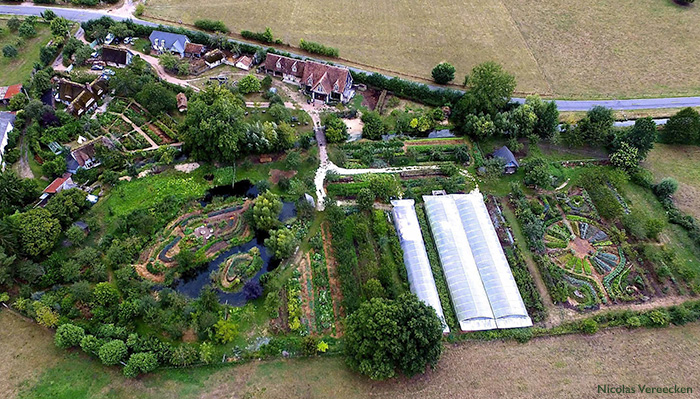
Small-scale farms are engines of local economic growth. They create jobs, support rural economies, and keep money circulating within the community. Farmers often purchase supplies and services from nearby businesses, further boosting the local economy.
Small-scale farms serve as vital engines of local economic growth, with far-reaching impacts that extend well beyond the boundaries of the fields they tend. At the heart of this economic ecosystem, these farms generate employment opportunities, providing a steady source of income for individuals and families in rural areas. The jobs they create encompass a wide spectrum, from agricultural laborers to farm managers, drivers, and packaging specialists, fostering a sense of community and stability.
Moreover, small-scale farms have a multiplier effect on local economies. Farmers often source their supplies and services from neighboring businesses, whether it’s purchasing equipment from a nearby hardware store, obtaining veterinary services from a local clinic, or acquiring seeds and fertilizers from regional suppliers. This symbiotic relationship between farms and local businesses creates a virtuous cycle of economic support. As farms thrive, so do these ancillary enterprises, resulting in increased revenue and employment opportunities throughout the community.
This interconnected web of economic activity helps keep money circulating locally, preventing it from flowing out to distant corporations or urban centers. It strengthens the financial foundation of rural areas, bolstering the resilience of these communities in the face of economic challenges. In essence, small-scale farms not only feed the community but also feed its economic vitality, underscoring their indispensable role in fostering sustainable, thriving rural economies.
If you’d like to dive deeper into this subject, there’s more to discover on this page: USDA Announces Framework for Shoring Up the Food Supply …
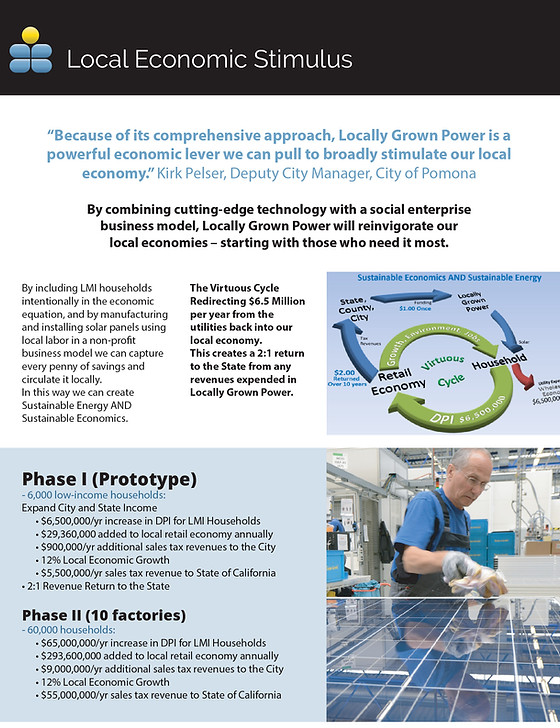
Small-scale farms are often more diversified in their crop and livestock production. This diversity contributes to food security by reducing the risk of crop failures due to pest outbreaks or adverse weather conditions.
Small-scale farms are the unsung heroes of the agricultural landscape, and their approach to diversification represents a robust strategy for enhancing food security and resilience in the face of unpredictable challenges.
Diversity in crop and livestock production is a hallmark of small-scale farming operations. Unlike large monoculture farms that concentrate on a single crop, small-scale farmers cultivate a range of crops and often raise various types of livestock. This diversity serves as a natural insurance policy against the uncertainties of farming.
One of the most significant benefits of this diversified approach is its ability to mitigate the risks associated with crop failures. In agriculture, numerous factors, from pests and diseases to adverse weather conditions, can wreak havoc on crops. However, small-scale farmers are less vulnerable to these risks because a setback in one crop doesn’t spell disaster for the entire farm.
For example, if a particular crop is susceptible to a pest outbreak or fails due to adverse weather, the other crops can often compensate for the losses. This not only ensures a more stable and consistent food supply but also reduces the reliance on chemical pesticides and synthetic fertilizers, as diversified farming systems often incorporate natural pest control methods and nutrient cycling.
Furthermore, small-scale farms are more likely to adopt sustainable and environmentally friendly practices. Their diversity extends beyond just crops and livestock; it often encompasses different farming techniques. Practices like crop rotation, companion planting, and the integration of cover crops contribute to soil health and reduce the need for chemical inputs. These sustainable approaches not only benefit the environment but also enhance the long-term productivity and resilience of the farm.
Moreover, the interconnectedness of small-scale farms with local communities fosters food security at a regional level. By supplying a variety of fresh produce and animal products, these farms ensure a diverse and nutritious food supply for the community, reducing dependence on centralized, long-distance food distribution systems.
In summary, small-scale farms exemplify the principles of resilience and sustainability in agriculture. Their diversified production methods act as a buffer against the uncertainties of farming, contributing significantly to food security and environmental conservation. As we face an increasingly uncertain future characterized by climate change and global challenges, the small-scale farming model serves as a beacon of hope and a source of inspiration for building resilient and sustainable food systems.
Explore this link for a more extensive examination of the topic: What is Sustainable Agriculture? | Sustainable Agriculture Research …

Small-scale farms help preserve rural communities by providing livelihoods for farmers and their families. They play a role in preventing rural depopulation and maintaining cultural traditions.
“Small-scale farms are the unsung heroes of rural communities, serving as the backbone that sustains not only the livelihoods of farmers and their families but also the very essence of these areas. Their significance extends far beyond just agriculture; they are the guardians of rural vitality, preventing depopulation, and safeguarding cherished cultural traditions.
Economic Pillars: Small-scale farms are economic engines in rural regions. They generate income for local families, creating a stable economic foundation. As these farms prosper, the money circulates within the community, benefiting not just farmers but also local businesses, from grocery stores to hardware shops. This economic interdependence helps maintain a robust local economy.
Preserving Rural Identity: Rural communities are often deeply connected to their land and agricultural heritage. Small-scale farms are custodians of this cultural identity. They preserve time-honored traditions, from planting rituals to harvest festivals, which serve as touchstones for local residents. These traditions help instill a sense of pride and continuity in rural areas.
Counteracting Depopulation: Small-scale farms are bulwarks against the exodus of people from rural areas. By providing livelihoods, they offer a compelling reason for families to stay and for new generations to consider returning. This population stability is crucial for maintaining schools, healthcare facilities, and other essential services in these communities.
Fostering Community Bonds: Small-scale farms often engage with the community on a personal level. Many host farm-to-table events, open their fields for pick-your-own experiences, or even educate local students about farming. These interactions build strong bonds between farmers and residents, reinforcing the sense of belonging and shared responsibility.
Biodiversity and Sustainability: Small-scale farms often employ sustainable and diverse farming practices. They are less likely to rely on monoculture and chemical-intensive agriculture, which can harm the environment. Instead, they embrace crop rotation, organic farming, and conserving native biodiversity, contributing to a healthier ecosystem.
Food Security: These farms play a crucial role in enhancing food security for local communities. By producing a variety of crops and foods, they reduce reliance on distant sources and the vulnerabilities associated with long supply chains. This ensures that residents have access to fresh, locally grown produce.
Tourism and Agritourism: Small-scale farms can also become tourist attractions, drawing visitors who seek authentic rural experiences. This diversification of income can bolster the financial stability of farms while introducing outsiders to the beauty of rural life.
In conclusion, small-scale farms are not just places where crops are grown; they are the heartbeats of rural communities. They provide economic stability, preserve culture and traditions, and offer a compelling reason for people to call rural areas their home. By supporting these farms, we not only ensure the well-being of farmers and their families but also safeguard the rich tapestry of rural life for generations to come.”
For a comprehensive look at this subject, we invite you to read more on this dedicated page: Introduction to Local Food Systems, DM271 | MU Extension

Smaller farms tend to employ more sustainable and environmentally friendly practices. They often prioritize soil health, biodiversity, and low-impact farming methods, reducing the carbon footprint of food production.
The virtues of smaller farms in promoting sustainable and environmentally friendly agriculture cannot be overstated. Their emphasis on sustainable practices goes hand in hand with their capacity to prioritize soil health, biodiversity, and low-impact farming methods, collectively contributing to a significant reduction in the carbon footprint of food production.
One of the standout characteristics of smaller farms is their commitment to preserving and enhancing soil health. These farmers understand that healthy soil is the bedrock of agricultural success. They prioritize organic matter, engage in crop rotation, and avoid excessive use of chemical fertilizers and pesticides. This approach not only boosts crop yields but also sequesters carbon in the soil, aiding in the fight against climate change.
Biodiversity is another hallmark of smaller farms. They often cultivate a wide variety of crops and incorporate natural ecosystems into their agricultural landscapes. This diversity benefits both the environment and local ecosystems by providing habitats for beneficial insects, birds, and wildlife. It also helps to minimize the risk of pests and diseases, reducing the need for chemical interventions.
Moreover, small-scale farmers tend to favor low-impact farming methods. They may use techniques like no-till farming, which reduces soil erosion and carbon release, or employ energy-efficient machinery. These practices not only lower energy consumption but also help mitigate the emissions associated with farming operations.
In essence, smaller farms lead the way in demonstrating that sustainable and environmentally friendly agriculture is not only possible but also economically viable. They are champions of practices that promote soil health, biodiversity, and reduced carbon emissions, setting an example for larger agricultural operations to follow. As we face the pressing challenges of climate change and environmental degradation, supporting and emulating the practices of smaller farms becomes increasingly crucial in our quest for a more sustainable and resilient food system.
For additional details, consider exploring the related content available here Review Local food systems: Reviewing two decades of research
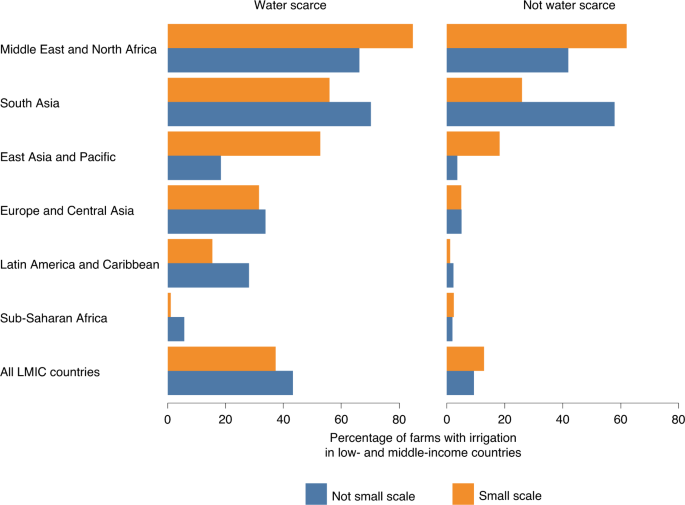
Small-scale farms may struggle to achieve the economies of scale that large commercial farms benefit from. This can result in higher production costs and lower profit margins.
Small-scale farms, while vital contributors to local food systems and biodiversity preservation, often grapple with unique challenges that stem from their size. These challenges can indeed lead to higher production costs and narrower profit margins, but they also bring forth a range of opportunities and advantages that are worth acknowledging:
Diverse Crop Selection: Small-scale farms have the flexibility to cultivate a wide variety of crops and heritage breeds. This diversity not only contributes to culinary richness but also mitigates risks associated with monoculture farming, such as susceptibility to pests and diseases.
Niche Markets: Smaller farms can cater to niche markets and specialty products that command higher prices. By focusing on unique or organic varieties, they can access consumers willing to pay a premium for quality and sustainability.
Community Engagement: Small-scale farmers often enjoy strong community support. They can establish direct relationships with consumers through farmers’ markets, Community Supported Agriculture (CSA) programs, and local restaurants, fostering loyalty and trust.
Local Resilience: In times of global disruptions, small-scale farms are often more resilient. Their localized supply chains are less susceptible to the vulnerabilities associated with large-scale global distribution networks.
Sustainable Practices: Smaller farms can adopt sustainable and regenerative practices more readily. With less land to manage, they can implement techniques such as organic farming, permaculture, and agroecology, contributing to long-term soil health and environmental sustainability.
Innovation and Experimentation: Small-scale farms are often hubs of innovation and experimentation. They can readily try new techniques and crops, serving as testing grounds for methods that could be scaled up for larger agriculture systems.
Cultural and Historical Preservation: Many small-scale farms are deeply rooted in cultural and historical traditions. They play a crucial role in preserving heirloom crop varieties and culinary practices, safeguarding cultural heritage.
Reduced Environmental Impact: Smaller farms typically have lower environmental footprints due to reduced chemical and resource use. This aligns with the growing consumer demand for sustainable and environmentally friendly agriculture.
Economic Diversification: Small-scale farms can diversify their income streams by incorporating value-added products, agritourism, and educational programs, enhancing financial stability.
Local Employment: These farms often create local employment opportunities, supporting rural economies and helping to stem the migration of young people to urban areas.
In conclusion, while small-scale farms may face challenges related to economies of scale, their significance cannot be overstated. They bring invaluable contributions to sustainable agriculture, local food systems, and cultural heritage preservation. By capitalizing on their unique strengths and opportunities, small-scale farms can not only navigate challenges but also thrive and continue playing a vital role in the global agricultural landscape.
Looking for more insights? You’ll find them right here in our extended coverage: Local Food Systems: Concepts, Impacts, and Issues, ERR 97, US …
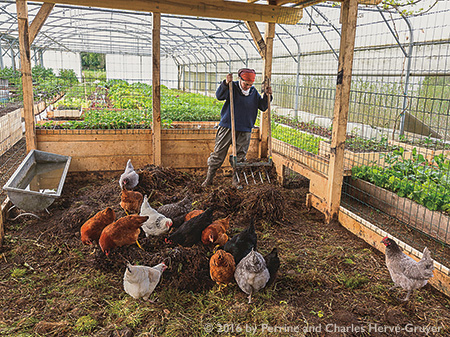
Accessing markets, distribution networks, and consumers can be a challenge for small-scale farmers. Establishing relationships with retailers, restaurants, and consumers can be time-consuming and require marketing expertise.
Navigating the complex web of markets, distribution networks, and consumers can indeed pose formidable challenges for small-scale farmers. To overcome these hurdles and thrive in today’s competitive food industry, they must adopt strategic approaches that go beyond traditional farming practices. Establishing strong relationships with retailers, restaurants, and consumers is not only an essential aspect of this journey but also a catalyst for success.
Collaborative Partnerships: Small-scale farmers can benefit greatly from forging collaborative partnerships with local businesses and food retailers. By doing so, they gain access to established distribution channels, thereby reducing the burden of getting their products to market. These partnerships can also provide a level of stability and consistency in sales, as they often involve long-term agreements that benefit both parties.
Farmers’ Markets and Direct Sales: Participating in farmers’ markets and engaging in direct sales to consumers can be highly rewarding endeavors for small-scale farmers. These avenues provide a direct link between producers and consumers, cutting out intermediaries and allowing farmers to capture a larger share of the profits. Building a loyal customer base at farmers’ markets can lead to word-of-mouth marketing and repeat business.
Online Platforms and E-commerce: In the digital age, online platforms and e-commerce have become essential tools for small-scale farmers. Establishing an online presence through a website or social media can help farmers reach a broader audience. Online sales platforms also enable farmers to sell their products directly to consumers, simplifying transactions and expanding their market reach beyond geographical constraints.
Community Supported Agriculture (CSA): CSA programs offer a unique opportunity for small-scale farmers to establish strong connections with consumers. By subscribing to a CSA, consumers receive regular deliveries of fresh, seasonal produce directly from the farm. This model not only provides farmers with a stable income but also builds a loyal customer base that is invested in the success of the farm.
Investing in Marketing and Branding: While farming expertise is paramount, marketing and branding are equally important for small-scale farmers. Investing time and resources in creating a compelling brand story, packaging, and marketing materials can help differentiate their products in a crowded market. Effective marketing strategies can convey the farm’s values, quality, and uniqueness, attracting consumers who align with these principles.
Networking and Education: Building relationships with fellow farmers, agricultural organizations, and industry associations can provide valuable insights and support. Farmers can exchange knowledge, share best practices, and stay updated on industry trends. Continuous education and training in areas like marketing, food safety, and sustainable practices can equip small-scale farmers with the expertise they need to succeed.
Community Engagement: Engaging with the local community can be a powerful way for small-scale farmers to establish trust and recognition. Hosting farm tours, offering educational workshops, or participating in community events not only raise awareness about the farm but also create a sense of goodwill among neighbors and potential customers.
In conclusion, while accessing markets and building relationships with consumers can be challenging for small-scale farmers, it’s a journey worth embarking upon. By embracing a combination of strategic partnerships, direct sales approaches, digital tools, marketing efforts, and community engagement, small-scale farmers can not only overcome these challenges but also thrive in the competitive landscape, ensuring their valuable contributions to sustainable and local agriculture.
For a comprehensive look at this subject, we invite you to read more on this dedicated page: USDA Announces Framework for Shoring Up the Food Supply …
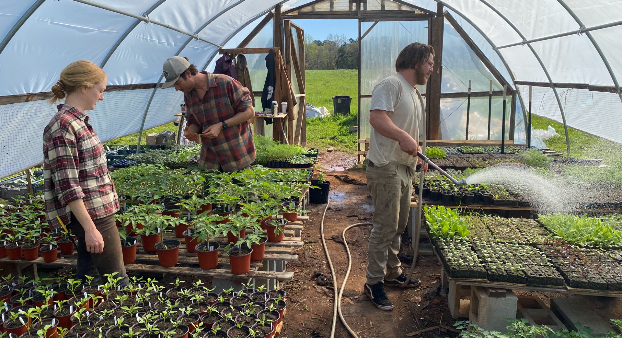
Small-scale farmers often face financial instability due to market fluctuations, weather-related risks, and the high costs associated with land, equipment, and inputs.
Small-scale farmers, the backbone of many rural communities, confront a daunting array of challenges that threaten their financial stability. Market fluctuations, one of the foremost issues they grapple with, can cause wild swings in income. Prices for agricultural products can be subject to unpredictable changes due to factors like global demand, trade policies, and even unforeseen events like pandemics, leaving farmers vulnerable to sudden income drops.
Weather-related risks are another relentless adversary. Droughts, floods, storms, and other climatic uncertainties can decimate crops and livestock, devastating farmers’ livelihoods. These extreme weather events are becoming increasingly frequent and severe in a changing climate, intensifying the financial risks faced by small-scale farmers.
Moreover, the costs associated with farming can be staggering. Land prices continue to soar, making it challenging for new farmers to access land and for existing ones to expand their operations. The cost of modern farming equipment and technology can also be prohibitive, making it difficult for small-scale farmers to remain competitive. Additionally, the expenses related to inputs like seeds, fertilizers, and pesticides can eat into already thin profit margins.
To address these financial instabilities, there’s a growing need for supportive policies, access to affordable financing, and investments in climate-resilient farming practices. Initiatives aimed at improving market access and providing farmers with timely weather information can help them make informed decisions and mitigate risks. Sustainable agricultural practices, such as organic farming and agroforestry, can also reduce input costs while promoting environmental sustainability.
Furthermore, connecting small-scale farmers with local and global markets through initiatives like the farm-to-table movement can help them secure stable incomes and access premium prices for their products. These connections empower farmers to have a direct link to consumers, reducing their reliance on intermediaries and enhancing their financial prospects.
In essence, addressing the financial instability faced by small-scale farmers requires a multifaceted approach that combines supportive policies, resilient agricultural practices, and improved market access. By doing so, we can help ensure that these dedicated farmers continue to play a vital role in feeding communities and contributing to global food security while enjoying a more stable and prosperous future.
To delve further into this matter, we encourage you to check out the additional resources provided here: The sustainability of “local” food: a review for policy-makers …

Local food systems encompass not only small-scale farms but also the distribution networks, markets, and consumer connections that support them.
Local food systems are multifaceted ecosystems that extend far beyond the boundaries of small-scale farms. Expanding on the idea that “Local food systems encompass not only small-scale farms but also the distribution networks, markets, and consumer connections that support them,” we can explore the intricate web of components that make up these systems:
Diverse Producers: Local food systems are home to a wide array of producers, including small family farms, urban gardens, cooperatives, and community-supported agriculture (CSA) initiatives. This diversity ensures a rich tapestry of products and practices.
Distribution Networks: Effective distribution networks are the lifeblood of local food systems. They include farmers’ markets, food hubs, wholesalers, and direct-to-consumer channels. These networks bridge the gap between producers and consumers, facilitating the flow of local goods.
Consumer Engagement: Central to the success of local food systems is consumer engagement. Conscious consumers who prioritize locally sourced products play a pivotal role in sustaining these systems. Their choices drive demand and support local economies.
Farmers’ Markets: Farmers’ markets serve as vibrant hubs where producers interact directly with consumers. These markets are not only places to buy fresh produce but also spaces for community building, education, and cultural exchange.
Local Food Policies: Governments and local authorities often play a crucial role in shaping local food systems through policies that promote local agriculture, regulate food safety, and support sustainable practices.
Food Education: Educational initiatives, such as farm tours, workshops, and school programs, foster a deeper understanding of where food comes from. These experiences connect people to their local food systems and promote food literacy.
Food Hubs: Food hubs act as aggregation points for local products, streamlining the distribution process. They often offer storage, processing, and marketing services, making it easier for small-scale producers to access larger markets.
Community Supported Agriculture (CSA): CSA programs establish direct relationships between consumers and farmers. Participants subscribe to receive a share of a farm’s produce regularly, creating a sense of shared responsibility and mutual support.
Sustainability Practices: Local food systems frequently emphasize sustainable agricultural practices, such as organic farming, regenerative agriculture, and reduced pesticide use. These practices contribute to healthier ecosystems and resilient food supplies.
Economic Resilience: Supporting local producers bolsters local economies by keeping a larger share of consumer spending within the community. This, in turn, enhances economic resilience and reduces vulnerability to external economic fluctuations.
Cultural Heritage: Local food systems often preserve cultural traditions and heritage by celebrating regionally specific ingredients, dishes, and culinary techniques. This cultural connection adds depth and richness to local food experiences.
Resilience to Shocks: Local food systems can be more resilient in the face of crises, such as pandemics or natural disasters. Shorter supply chains and local sourcing reduce vulnerabilities to disruptions in global supply chains.
In essence, local food systems are dynamic and interconnected networks that promote sustainable agriculture, support local economies, and connect communities with their food sources. Their strength lies in their diversity and adaptability, making them a vital component of the broader food landscape. By embracing and enhancing these systems, we can foster a more sustainable, resilient, and locally driven approach to food production and consumption.
To expand your knowledge on this subject, make sure to read on at this location: Review Local food systems: Reviewing two decades of research

Local food systems allow farmers to sell their products directly to consumers, cutting out intermediaries and earning a higher share of the retail price.
Local food systems are like bridges that bring producers and consumers closer together, fostering a unique and mutually beneficial connection. In these systems, farmers find themselves at the heart of their communities, cultivating not just crops but also strong relationships with those who appreciate the fruits of their labor.
By selling their products directly to consumers, farmers can sidestep the often complex and costly web of intermediaries. This direct-to-consumer approach empowers them to set fair prices for their goods, ensuring that their hard work is justly rewarded. It’s a significant shift from traditional supply chains, where middlemen often take a substantial cut, leaving farmers with only a fraction of the retail price.
This newfound economic agency isn’t just about increasing farmers’ income; it’s about securing their livelihoods and allowing them to reinvest in sustainable farming practices. With a larger share of the pie, farmers are better positioned to make essential improvements to their operations, such as adopting eco-friendly techniques, enhancing infrastructure, and bolstering the overall quality of their produce.
Moreover, local food systems offer consumers the priceless advantage of transparency. When you buy directly from a farmer, you can ask questions, visit their farms, and witness firsthand the care and dedication that go into cultivating your food. This transparency not only builds trust but also encourages a more profound appreciation for the food on your plate.
But it’s not just farmers and consumers who benefit. Local food systems have far-reaching positive effects on communities. They stimulate local economies by keeping money circulating within the region, supporting jobs not only on farms but also in food processing, distribution, and retail. The vitality of farmers’ markets, community-supported agriculture programs, and farm stands enriches the cultural fabric of towns and cities, creating vibrant, close-knit communities.
In essence, local food systems represent a win-win scenario. Farmers earn a fairer wage, consumers gain access to fresher, more transparently sourced products, and communities thrive as they rally around their local food heroes. It’s a beautiful illustration of how reimagining our food supply chains can lead to a more equitable, sustainable, and closely connected food future.
To expand your knowledge on this subject, make sure to read on at this location: Local Food Sales Continue to Grow Through a Variety … – USDA ERS

Farmers’ markets, community-supported agriculture (CSA) programs, and farm-to-table restaurants foster community engagement and strengthen the bond between producers and consumers.
Farmers’ markets, community-supported agriculture (CSA) programs, and farm-to-table restaurants play a pivotal role in fostering community engagement and nurturing the essential bond between producers and consumers. These diverse initiatives go beyond merely providing access to fresh, locally grown food; they create vibrant spaces where people from all walks of life can connect, share, and invest in the well-being of their communities.
Farmers’ markets are bustling hubs where the heartbeat of a community’s agricultural heritage comes to life. Shoppers meander through stalls, greeted by the smiling faces of farmers and artisans. This face-to-face interaction is invaluable, as it allows consumers to ask questions, gain insights into farming practices, and form personal relationships with those who grow their food. It transforms a simple transaction into a meaningful exchange, reinforcing the idea that food isn’t just a commodity but a shared experience.
Community-supported agriculture (CSA) programs take this concept even further. Participants in CSAs become more than customers; they become stakeholders in a local farm’s success. By subscribing to a CSA, individuals and families commit to regularly receiving a portion of the farm’s produce throughout the growing season. This not only ensures a direct and consistent supply of fresh, seasonal goods but also creates a financial lifeline for the farmer. In return, CSA members often have the opportunity to visit the farm, volunteer, and deepen their understanding of the challenges and joys of farming. This heightened involvement transforms food consumption into a mutually beneficial partnership.
Farm-to-table restaurants complete this virtuous cycle by bridging the gap between producers and consumers in a culinary context. Chefs who champion the farm-to-table ethos collaborate closely with local farmers and artisans to curate menus that showcase the best of the region’s seasonal offerings. When diners enjoy a meal at such a restaurant, they not only savor the flavors of their community but also gain a greater appreciation for the entire food supply chain. The restaurant becomes a platform for storytelling, highlighting the hard work and dedication of local producers and creating a profound connection between the plate and the land.
Collectively, these initiatives have profound impacts on communities. They stimulate local economies, helping small-scale farmers and artisans thrive. They reduce food miles and, consequently, the carbon footprint of the food supply chain. Most importantly, they foster a sense of pride and ownership in the quality of local produce and the well-being of one’s community. In doing so, farmers’ markets, CSA programs, and farm-to-table restaurants are not just places to buy and eat food; they are vibrant, living expressions of the interconnectedness of producers and consumers, strengthening the bonds that hold communities together and nourishing both body and spirit.
Additionally, you can find further information on this topic by visiting this page: Claudia Schmidt — Directory — Department of Agricultural …

Local food systems are often more resilient in the face of disruptions, such as supply chain issues or natural disasters. They provide a reliable source of food during crises.
Local food systems serve as a beacon of resilience in the midst of adversity, acting as a reliable anchor when global supply chains falter or nature unleashes its fury. Their capacity to weather disruptions and provide a steady source of sustenance during crises is a testament to their robustness and adaptability.
Supply Chain Resilience: Global supply chains are susceptible to a myriad of disruptions, including geopolitical tensions, trade disputes, and unforeseen events like the COVID-19 pandemic. In contrast, local food systems are characterized by shorter supply chains and a closer relationship between producers and consumers. This proximity minimizes the risk of supply chain disruptions and ensures that food can continue to flow even when global logistics falter.
Reduced Vulnerability to Natural Disasters: Local food systems are often better equipped to withstand the impact of natural disasters, such as hurricanes, floods, or wildfires. The geographic dispersion of local farms reduces the likelihood that a single catastrophic event will wipe out the entire food supply. Moreover, the strong community ties inherent in local food systems facilitate swift responses to disasters, with neighbors helping each other recover and rebuild.
Seasonal and Diverse Offerings: Local food systems prioritize seasonal and diverse crops. This diversity provides a buffer against the unpredictable effects of climate change. When one crop suffers due to adverse weather conditions, others are likely to thrive, ensuring a continuous supply of fresh, locally sourced food.
Community Resilience: Local food systems foster a sense of community resilience. When crises strike, whether they are economic, environmental, or health-related, communities that have invested in local agriculture are better prepared to support one another. Farmers’ markets, community-supported agriculture (CSA) programs, and local cooperatives can quickly adapt to changing circumstances, providing essential food access and stability.
Less Reliance on Imports: Reliance on imported food leaves regions vulnerable to disruptions in international trade. Local food systems reduce this dependence, allowing communities to be more self-sufficient. This self-reliance ensures that food continues to be available even when global markets experience turmoil.
Food Security and Accessibility: During times of crisis, accessibility to food becomes a paramount concern. Local food systems are more likely to prioritize equitable access to fresh, nutritious food. This focus on food security means that vulnerable populations have a better chance of accessing the sustenance they need, even in challenging circumstances.
In summary, local food systems embody a resilience that goes beyond food supply. They represent a commitment to community, sustainability, and self-sufficiency, serving as a lifeline during times of disruption. As the world grapples with an increasingly uncertain future marked by climate change, pandemics, and global challenges, the resilience of local food systems becomes an invaluable asset. They remind us that strengthening local food networks isn’t just a matter of preference; it’s a strategic move toward building more resilient, sustainable, and secure food systems for the well-being of all.
If you’d like to dive deeper into this subject, there’s more to discover on this page: Resilient Japanese Local Food Systems Thrive during COVID-19 …

Conclusion
Small-scale farming and local food systems are not just about nostalgia or aesthetics; they are vital economic contributors with far-reaching benefits. They support local economies, promote sustainable practices, and provide a direct link between producers and consumers. As we navigate the complex challenges of the global food system, these local and sustainable approaches offer a path forward, emphasizing resilience, community, and economic viability for both rural and urban areas alike. The economics of small-scale farming and local food systems tell a story of interconnectedness and sustainability that holds promise for the future of food.
To delve further into this matter, we encourage you to check out the additional resources provided here: Review Local food systems: Reviewing two decades of research
More links
Should you desire more in-depth information, it’s available for your perusal on this page: Assessing the Economic Impacts of Local Food System Producers …
